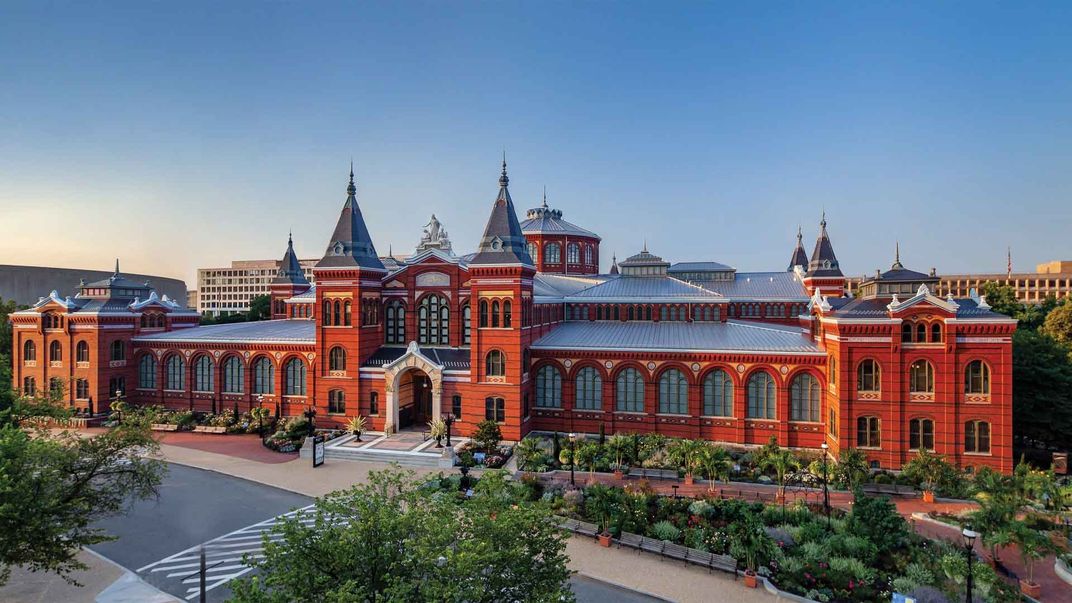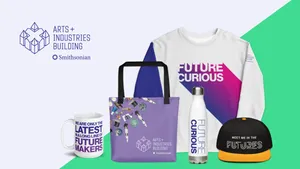What If Humans and Artificial Intelligence Teamed Up to Build Better Communities?
Smithsonian’s ‘Futures’ exhibition team and Autodesk announce groundbreaking interactive experience to showcase a bold new problem-solving philosophy
/https://tf-cmsv2-smithsonianmag-media.s3.amazonaws.com/filer/16/64/1664ad46-0298-4085-aa12-5535a9d132ac/aib_stills_01_comp_02_v0060005.jpg)
Humanity has long framed its relationship with artificial intelligence in adversarial terms: the age-old contest of humans vs. machines. A.I.s have bested our most talented chess players, schooled our nerdiest Jeopardy! stars and caused gamers to throw their controllers against the wall in frustration. In the world of science fiction, from 2001: A Space Odyssey to Ex Machina, A.I.s have gone further, again and again transcending their programming to revolt against their human creators.
But while it’s easy to get hung up on this trope of the artificial intelligence-as-villain—we’ve always been an insecure species—the truth is that A.I.s make much better collaborators than combatants. This is the guiding philosophy behind “generative design,” a burgeoning sphere of engineering that relies on harmonious, iterative interactions between humans and A.I.s to rapidly develop prototypes and bring out-of-the-box solutions instantly within reach.
This refreshing outlook on A.I. will be integral to the Smithsonian’s “Futures” exhibition, a celebration of the Institution’s 175th anniversary, which promises to look eagerly at tomorrow’s possibilities in an invigorating World’s Fair-style extravaganza. Launching this November and continuing through July 2022, “Futures” will be held at the historic Arts and Industries Building (AIB), America’s original National Museum. Nicknamed the “Palace of Wonders,” the AIB will be a fitting venue for a show that promises a 32,000-square-foot playground of transformative ideas.
The exhibition space will teem with examples of bold new technologies and feats of engineering, including “The Co-Lab,” a must-see hub for generative design thinking and a striking example of the kind of architecture achievable only through human and A.I. teamwork. Developed by researchers at the tech-driven design company Autodesk alongside Smithsonian curators, “The Co-Lab” is a skeletal lattice of sturdy but lightweight wood. Its aesthetic falls somewhere between origami crane and organic chemistry model. “We’re trying to emphasize the warmth and natural feel,” says Brad MacDonald, AIB’s director of creative media.
Human engineers decided on the rough silhouette of the structure as well as their design priorities—user experience and sustainability—then handed the concept over to A.I. to generate hundreds of viable mock-ups. From there it was a process of back-and-forth refinement, a rewarding loop of parameter-tweaking and A.I. feedback that funneled down to what would become the actual, easy-to-assemble “Co-Lab,” made of just 60 beams and 25 joints. “We made this a pioneering research project on how to build more sustainable structures that are also novel-looking and that enable viewers to see materials in a new way,” says Ray Wang, a senior research scientist at Autodesk. Though fabricated from very little material, the chosen structure supports a quintet of 85-inch monitors while also preserving sightlines to the rest of the exhibition.
But it is within the framework that the real magic happens. Here resides the “Future Communities” interactive, a unique experience in which visitors will be invited to design a futuristic city block from scratch using a digital toolkit—with suggestions from a sophisticated A.I. guiding them along the way. “Users will manually place buildings and parks directly onto the design space,” says Wang of the virtual process, while “the algorithm takes note and suggests other possibilities to them.”
Since participants will only have a few minutes to work and may be novices when it comes to design and/or technology, the team behind the installation took care to ensure the user experience would be as clean as possible, allowing them to pick between intuitive, easily differentiable options for their city while leveraging the quick-thinking algorithm behind the scenes to refine, improve and integrate their ideas as they experiment. “We want to see how the tech we [at Autodesk] are using can be used for visitors from across all walks of life while still displaying the power behind it,” Wang says.
Visitors will be required to work in teams, meaning that the experience will be as much an exercise in human-human cooperation as it is human-A.I. cooperation. “We want to show what it’s like to make something in collaboration with other humans with disparate goals,” MacDonald says, “with this A.I. that helps mediate between people and meet the majority needs.”
The changes individual users make on their small screens will all be reflected on a shared big screen, where the group’s growing 3-D city will be visualized in real time from a sleek isometric perspective—the sort of angled aerial view that fans of old-school SimCity will remember well. This connection to the video games industry is not coincidental, as the technology underlying the visuals is none other than the versatile and enduringly popular game engine Unity.

MacDonald, himself a seasoned game developer, tells me that the installation draws not only technical inspiration from gaming, but tonal inspiration as well. “We leaned into game design because of its strong emotional appeal,” he tells me. “We wanted to frame this as a playful experience.” One fun, gamey twist MacDonald is particularly excited for visitors to experience is the Personas system. While all members of a given team will have to work together to design their city block, each will be assigned a roleplaying Persona with distinct priorities, creating little conflicts that teams will have to hash out verbally in order to succeed. Perhaps one team member will be asked to focus on accessibility, another on environmental impact and a third on public transit integration. What sort of compromise will satisfy everyone’s needs? The inputs of the A.I. algorithm will be integral in bridging differences and finding mutually agreeable solutions. Once teams arrive at their answer, they will receive a friendly “score” on the overall design of their final product as well as their ability to synergize.
“The Personas are meant to communicate the idea of how tech and design can mediate between a lot of different stakeholders,” Wang says. In every real-world design challenge, after all, “there is a diverse set of voices that need to be heard.”
What will become of all the virtual city blocks created by visitors to “The Co-Lab?” Nothing is set in stone yet, but MacDonald says the designs are unlikely to be lost to history. “The current thought is that we’ll be archiving these,” he says. All user data will be anonymized, but the creations themselves will endure. Wang teases some exciting possibilities—such as aggregating the blocks into one massive, collectively imagined city. “We’re actively working with AIB on how we want to use this information,” he says.
As for the immediate future, though, both MacDonald and Wang are optimistic that the interactive will open participants’ eyes to the many ways in which humans can work hand in hand with A.I. to better realize their own creative visions—and to find compromise where those visions conflict.
“There’s a potential upside and benefit to the inclusion of A.I. in solving problems,” MacDonald says. “We’re looking for ways in which tech can give us the space to be better.”
Wang hopes the Future Communities installation, and the “Futures” exhibition as a whole, will show visitors how “technology can help people work together” towards a smarter, more equitable world. “A united future is one that’s going to be diverse and complex,” he says, “and we have to draw on all the resources we have” in order to get there.
The “Futures” exhibition goes on view at the Smithsonian’s Arts and Industries Building in Washington, D.C. November 2021 and will be open through July 2022.
/https://tf-cmsv2-smithsonianmag-media.s3.amazonaws.com/accounts/headshot/DSC_02399_copy.jpg)



/https://tf-cmsv2-smithsonianmag-media.s3.amazonaws.com/accounts/headshot/DSC_02399_copy.jpg)